Windows through the years: thirty years the Microsoft operating system
The first version of the Windows graphical shell for MS-DOS was released almost thirty years ago, only a few months are left before the anniversary. After decades, Windows's share of the personal computer market is more than ninety percent. More than half of all desktop computers run on Windows 7.
Let's remember which versions of Windows we have seen since 1985. The first version of the Windows graphical shell was released in 1985: on November 20, it appeared on retail chains. To avoid legal problems with Mac OS, the developers did not use the basket, and the windows could not overlap each other. This version of Windows did not have a taskbar at the bottom of the screen. "Useless add-on over DOS" included one game - Reversi.
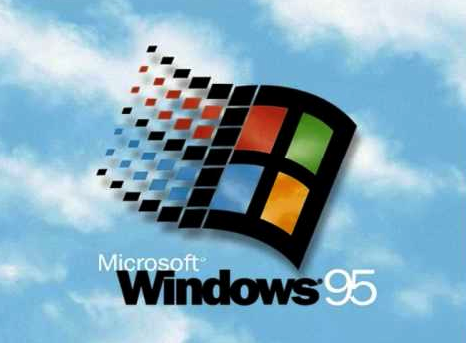
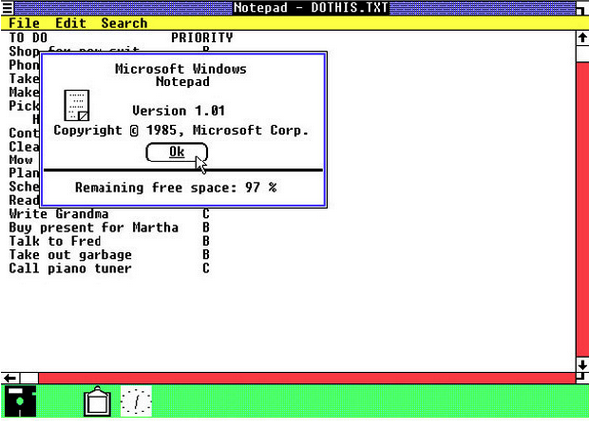
Two years later, in 1987, Microsoft released a version of Windows 2.0. Here appeared the Paint applications familiar to us from childhood, watches, the MS-DOS file manager, and the terminal. Shortly after release 2.0, the company first ported Word and Excel to Windows.
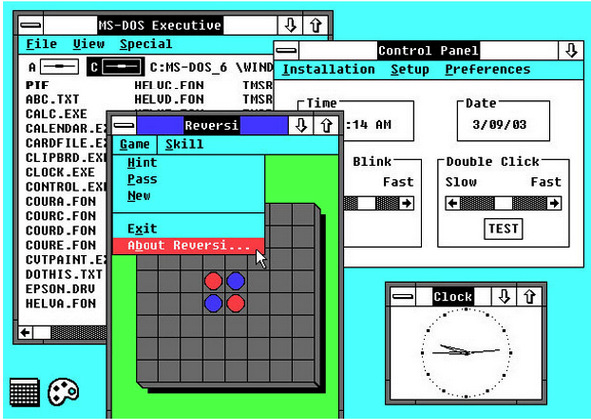
Windows 3.0 in 1990 included Program Manager, support for VGA and virtual memory, a new “3D” design, and the game “The Scarf”. The game was needed not for the entertainment of office workers, but for training users in the skills of using the mouse .
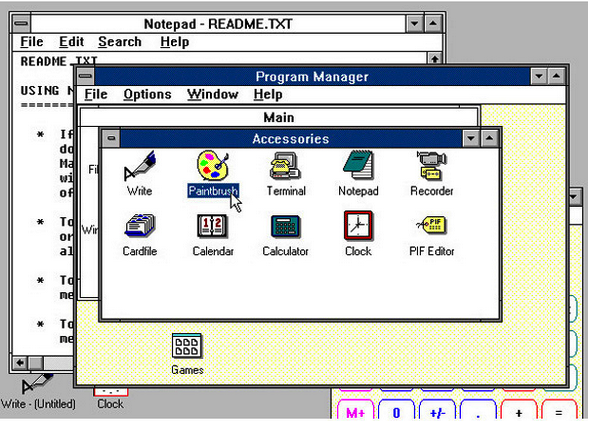
In 1992, Microsoft released Windows 3.1, adding scalable TrueType fonts and the Minesweeper game to the system to train the accuracy of hitting the screen with the cursor. For the first time, support for multimedia content has appeared in the system.

Windows for Workgroups 3.1 was released in 1992. It included native support for networks - especially local area networks LAN, rapidly gaining popularity in the business of that time.
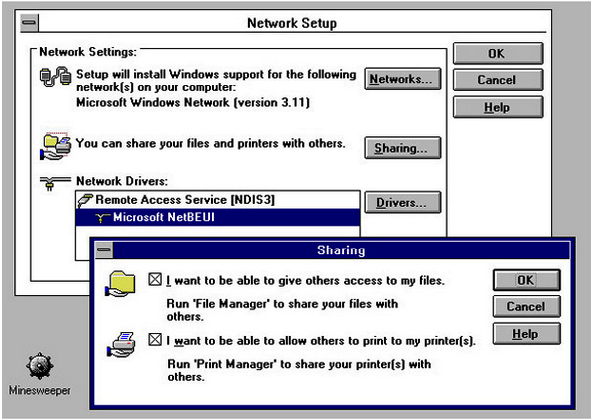 i.imgur.com/cy6jMEK.png
i.imgur.com/cy6jMEK.png
1993 can be called the year of birth of the Windows operating system. Prior to Windows NT 3.1, what was called Windows was a graphical shell for MS-DOS. Now Microsoft has introduced a 32-bit operating system designed for modern workstations. Externally, the OS did not differ from Windows 3.1.
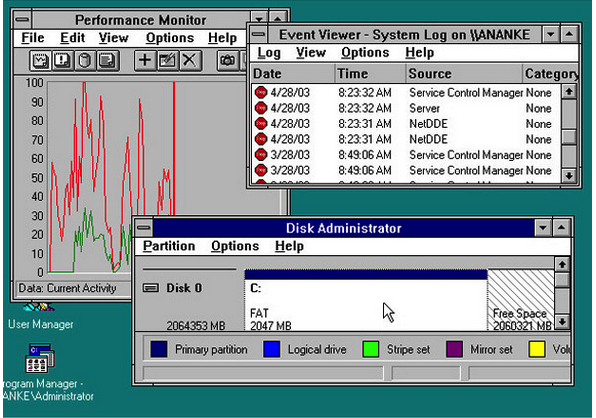
In August 2015, Windows 95 turned 20 years old . Computer systems have become available not only to geeks, but also to housewives. The Start button and the taskbar simplified working with the system.
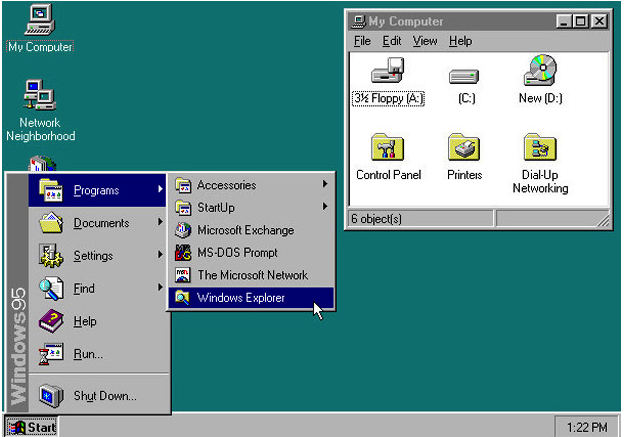
Windows NT 4.0 has combined an interface similar to Windows 95 with the robust Windows NT kernel. This system has become Microsoft's most popular operating system for the next few years.
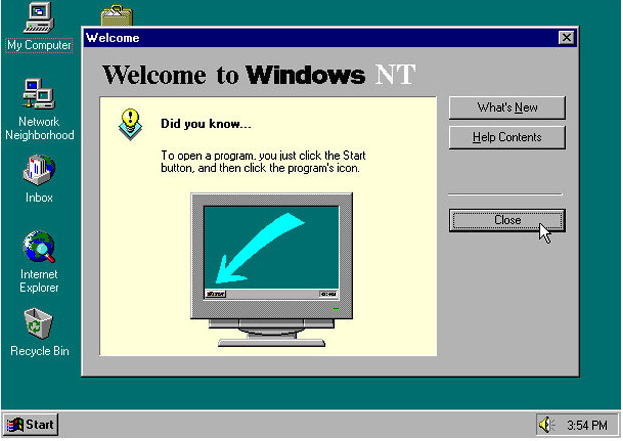
Windows CE is an operating system for handheld computers, smartphones, and embedded systems. It was released in November 1996, at that time it was a "stripped down" version of the desktop operating system. The latest version of the system - 7.0 - was released in March 2011.
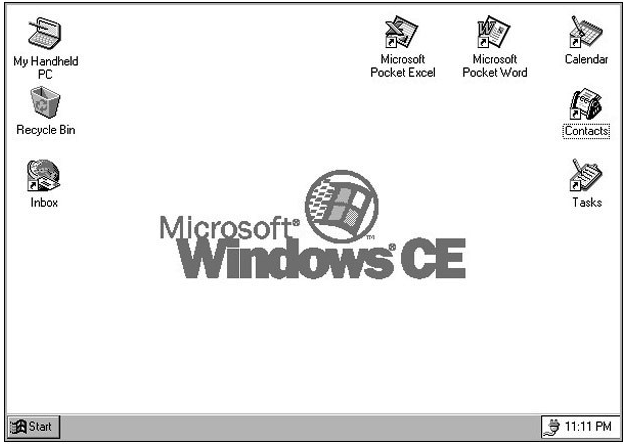
Internet Explorer Web browser has become an indispensable part of Windows 98, released in 1998. The system has a toolbar for quick launch of applications and native support for USB. The system has become very popular, although not the most stable.
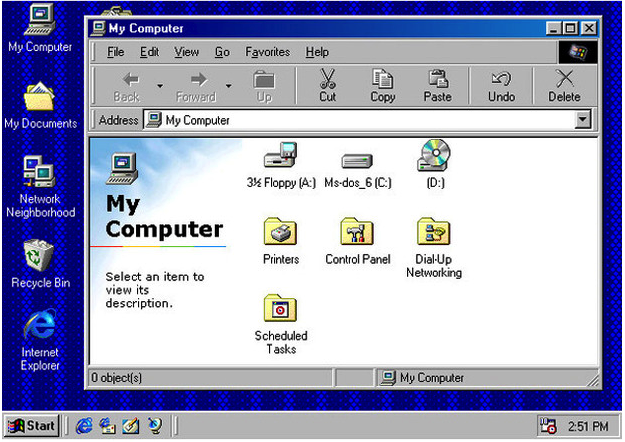
Windows 2000 is version 5.0 of the operating system from the Windows NT line. The series was followed by XP, Vista, Windows 7 and 8. The first public beta version of the system appeared in 1997, the company rolled out the final version on February 17, 2000. The system supported the server part of Active Directory, the NTFS 3.0 file system, and the encrypted EFS, and received the user interface with Active Desktop.
To use Windows 2000, you had to have a processor from 133 MHz, from 32 megabytes of RAM and from 2 gigabytes of memory on your hard drive.
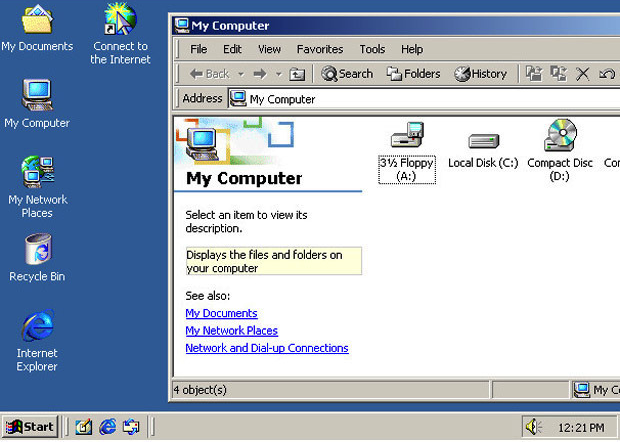
Released in 2000, Windows ME, both critics and the user were called extremely unstable, talked about constant freezes and crashes.
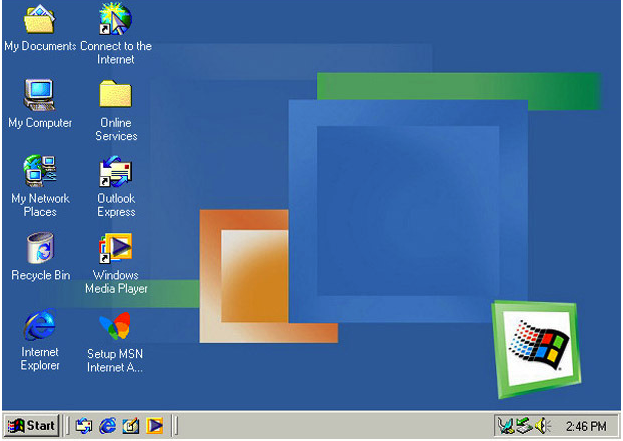
The first computer I bought was running Windows XP. I got a computer in 2006, and Microsoft released XP in 2001. Windows XP became the most popular Microsoft operating system of its time.
In June 2008, Microsoft announced that it would support XP until 2014. General support for the system ended in 2009, extended - on April 8, 2014.
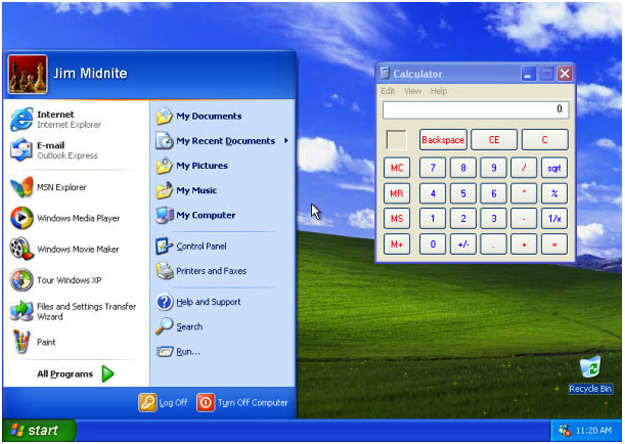
In 2007, Microsoft released Windows Vista in response to the Mac OS X operating system. Translucent windows, large icons, and a new Start menu didn’t impress critics.
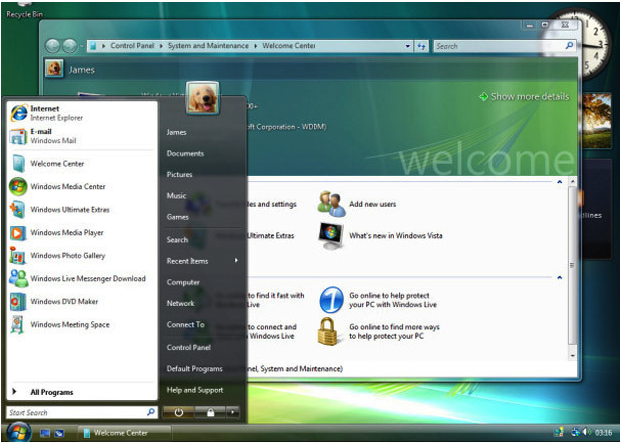
The Windows Server 2008 server operating system replaces Windows Server 2003 as a representative of the new generation of the Vista family of systems.
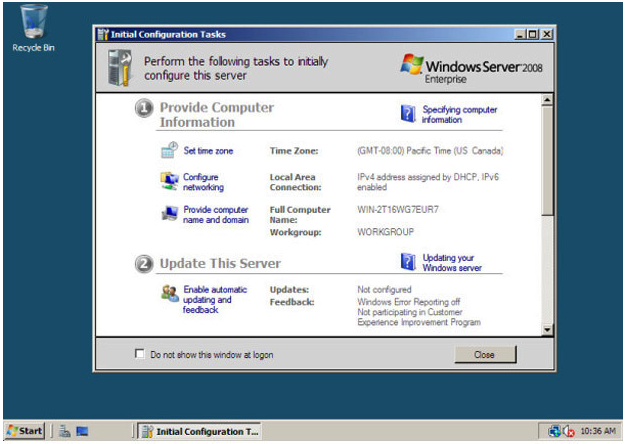
Windows 7 is one of the most successful releases of Windows. Leaving the beautiful interface (Aero) and icons, Microsoft removed many bugs and made the system more reliable.
Six years passed between the release of Windows XP and Windows Vista, and only three years between the release of Vista and 7.
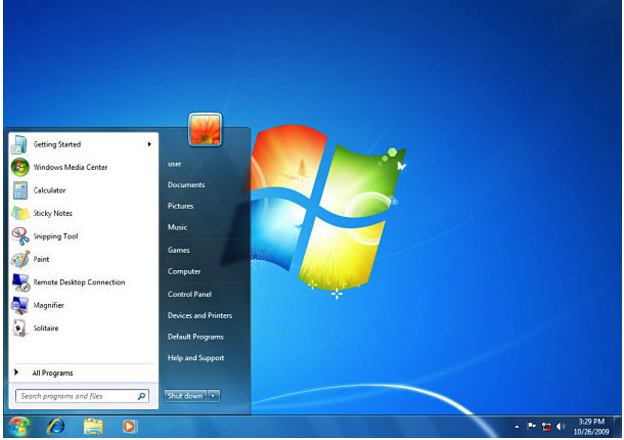
In 2012, Microsoft introduced Windows 8 with the Metro tiled interface. The interface first appears after starting the system and is similar to the desktop. Fortunately, the operating system continued to support the classic Windows desktop, but removed the Start button. The system is designed for touch screens, although you can use it on computers with conventional monitors.
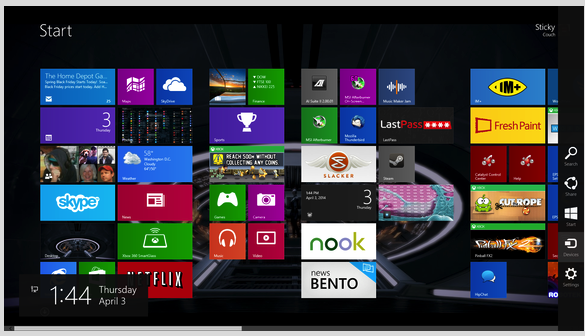
Windows 8.1 - Update for Windows 8 from 2014. Now users at startup can see the working screen instead of Metro, the “Start” button appeared, although without the old start menu.
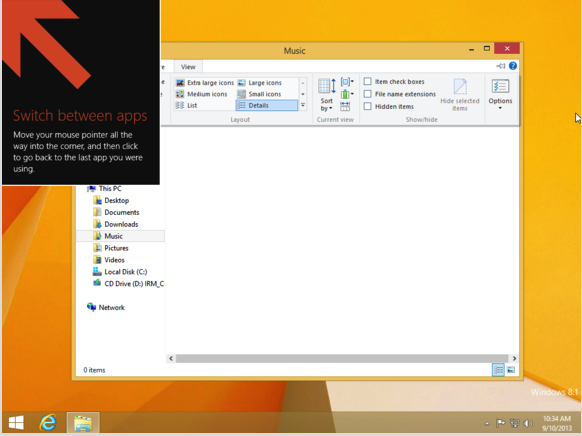
In 2015, Microsoft introduced Windows 10, which can be upgraded from Windows 7 and Windows 8. Microsoft returned the start menu.
There were some unpleasant moments for the end user: in August 2015, torrent trackers started banning users from Windows 10 on computers, because the system sends an excessive amount of data to Microsoft servers.
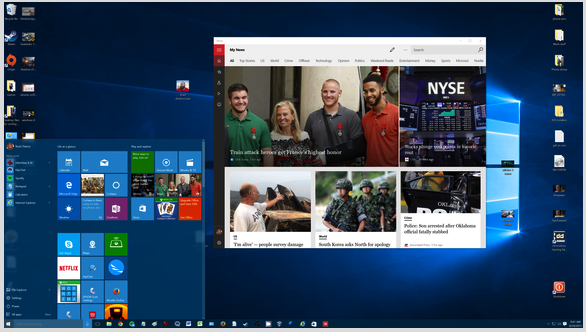
Let's remember which versions of Windows we have seen since 1985. The first version of the Windows graphical shell was released in 1985: on November 20, it appeared on retail chains. To avoid legal problems with Mac OS, the developers did not use the basket, and the windows could not overlap each other. This version of Windows did not have a taskbar at the bottom of the screen. "Useless add-on over DOS" included one game - Reversi.


Two years later, in 1987, Microsoft released a version of Windows 2.0. Here appeared the Paint applications familiar to us from childhood, watches, the MS-DOS file manager, and the terminal. Shortly after release 2.0, the company first ported Word and Excel to Windows.

Windows 3.0 in 1990 included Program Manager, support for VGA and virtual memory, a new “3D” design, and the game “The Scarf”. The game was needed not for the entertainment of office workers, but for training users in the skills of using the mouse .

In 1992, Microsoft released Windows 3.1, adding scalable TrueType fonts and the Minesweeper game to the system to train the accuracy of hitting the screen with the cursor. For the first time, support for multimedia content has appeared in the system.

Windows for Workgroups 3.1 was released in 1992. It included native support for networks - especially local area networks LAN, rapidly gaining popularity in the business of that time.
 i.imgur.com/cy6jMEK.png
i.imgur.com/cy6jMEK.png1993 can be called the year of birth of the Windows operating system. Prior to Windows NT 3.1, what was called Windows was a graphical shell for MS-DOS. Now Microsoft has introduced a 32-bit operating system designed for modern workstations. Externally, the OS did not differ from Windows 3.1.

In August 2015, Windows 95 turned 20 years old . Computer systems have become available not only to geeks, but also to housewives. The Start button and the taskbar simplified working with the system.

Windows NT 4.0 has combined an interface similar to Windows 95 with the robust Windows NT kernel. This system has become Microsoft's most popular operating system for the next few years.

Windows CE is an operating system for handheld computers, smartphones, and embedded systems. It was released in November 1996, at that time it was a "stripped down" version of the desktop operating system. The latest version of the system - 7.0 - was released in March 2011.

Internet Explorer Web browser has become an indispensable part of Windows 98, released in 1998. The system has a toolbar for quick launch of applications and native support for USB. The system has become very popular, although not the most stable.

Windows 2000 is version 5.0 of the operating system from the Windows NT line. The series was followed by XP, Vista, Windows 7 and 8. The first public beta version of the system appeared in 1997, the company rolled out the final version on February 17, 2000. The system supported the server part of Active Directory, the NTFS 3.0 file system, and the encrypted EFS, and received the user interface with Active Desktop.
To use Windows 2000, you had to have a processor from 133 MHz, from 32 megabytes of RAM and from 2 gigabytes of memory on your hard drive.

Released in 2000, Windows ME, both critics and the user were called extremely unstable, talked about constant freezes and crashes.

The first computer I bought was running Windows XP. I got a computer in 2006, and Microsoft released XP in 2001. Windows XP became the most popular Microsoft operating system of its time.
In June 2008, Microsoft announced that it would support XP until 2014. General support for the system ended in 2009, extended - on April 8, 2014.

In 2007, Microsoft released Windows Vista in response to the Mac OS X operating system. Translucent windows, large icons, and a new Start menu didn’t impress critics.

The Windows Server 2008 server operating system replaces Windows Server 2003 as a representative of the new generation of the Vista family of systems.

Windows 7 is one of the most successful releases of Windows. Leaving the beautiful interface (Aero) and icons, Microsoft removed many bugs and made the system more reliable.
Six years passed between the release of Windows XP and Windows Vista, and only three years between the release of Vista and 7.

In 2012, Microsoft introduced Windows 8 with the Metro tiled interface. The interface first appears after starting the system and is similar to the desktop. Fortunately, the operating system continued to support the classic Windows desktop, but removed the Start button. The system is designed for touch screens, although you can use it on computers with conventional monitors.

Windows 8.1 - Update for Windows 8 from 2014. Now users at startup can see the working screen instead of Metro, the “Start” button appeared, although without the old start menu.

In 2015, Microsoft introduced Windows 10, which can be upgraded from Windows 7 and Windows 8. Microsoft returned the start menu.
There were some unpleasant moments for the end user: in August 2015, torrent trackers started banning users from Windows 10 on computers, because the system sends an excessive amount of data to Microsoft servers.

Only registered users can participate in the survey. Please come in.
What operating system are you using?
- 2.3% Windows XP 58
- 0% Windows Vista 1
- 29.6% Windows 7 741
- 12% Windows 8 301
- 33.4% Windows 10 836
- 0.5% Other (Windows) 14
- 21.8% Other (Not Windows 545
